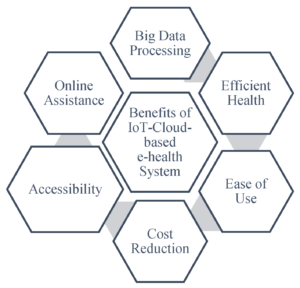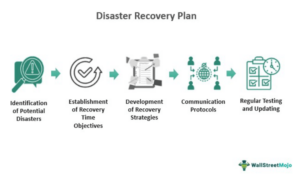Welcome to our comprehensive guide on edge computing architecture, a cutting-edge technology that is transforming the way we process and analyze data. In this article, we will delve into the intricacies of this revolutionary concept, exploring its significance, benefits, and potential applications in various industries. Whether you are a tech enthusiast, a business owner, or simply curious about the latest advancements in the digital landscape, this article will provide you with valuable insights into the world of edge computing architecture.
What is Edge Computing Architecture?
Edge computing architecture is a distributed computing paradigm that brings computation and data storage closer to the edge of the network, near the source of data generation. Unlike traditional cloud computing, which relies on centralized data centers, edge computing aims to process and analyze data locally, at or near the edge devices themselves.
The Rise of Edge Computing
In recent years, the exponential growth of connected devices, the Internet of Things (IoT), and the increasing volume of data generated have posed significant challenges to traditional cloud-based architectures. The latency introduced by sending data to distant cloud servers for processing and analysis has become a bottleneck for many real-time and latency-sensitive applications. This is where edge computing architecture steps in to address these challenges and revolutionize the way we handle data.
Decentralized Data Processing
Edge computing architecture enables decentralized data processing by distributing computational resources to the edge devices, such as sensors, IoT devices, and gateways. This allows for faster response times, reduced network congestion, and improved reliability. By processing data at the edge, organizations can minimize the reliance on a centralized cloud infrastructure and optimize their operations.
Benefits of Edge Computing Architecture
Edge computing architecture offers numerous benefits, making it an attractive solution for various industries:
1. Reduced Latency
By processing data locally at the edge, edge computing architecture significantly reduces the latency introduced by sending data to distant cloud servers. This is particularly crucial for applications that require real-time processing, such as autonomous vehicles, industrial automation, and augmented reality.
2. Enhanced Data Security and Privacy
Edge computing architecture addresses concerns regarding data security and privacy by keeping sensitive data within the local edge devices or gateways. This reduces the risk of data breaches and unauthorized access, as data is processed and analyzed closer to its source, minimizing the need for data transmission over potentially insecure networks.
3. Bandwidth Optimization
By processing data locally, edge computing architecture optimizes bandwidth utilization. Instead of sending massive amounts of raw data to the cloud for processing, only relevant and pre-processed data is transmitted, reducing the strain on the network infrastructure and minimizing bandwidth costs.
4. Offline Operation
Another key advantage of edge computing architecture is its ability to operate offline or with limited connectivity. Edge devices can continue to process and analyze data even in environments with intermittent or no network connectivity. This is particularly beneficial in remote locations or during network outages, ensuring uninterrupted operations.
5. Scalability and Cost-Efficiency
Edge computing architecture offers scalability and cost-efficiency by distributing computational resources across edge devices. Instead of relying solely on a centralized cloud infrastructure, organizations can leverage existing edge devices and gateways to handle data processing, reducing the need for additional hardware and associated costs.
The Components of Edge Computing Architecture
Edge computing architecture comprises several key components that work together to enable the seamless processing and analysis of data at the edge:
1. Edge Devices
Edge devices are the endpoints where data is generated or collected. These can include sensors, IoT devices, mobile devices, or even vehicles. These devices capture and transmit data to the edge servers or gateways for local processing.
2. Edge Gateways
Edge gateways act as intermediaries between edge devices and the cloud or central data centers. They aggregate and filter data from multiple edge devices, perform initial processing, and transmit relevant data to the cloud or edge servers.
3. Edge Servers
Edge servers are responsible for processing and analyzing data locally at the edge. These servers are typically located closer to the edge devices, enabling faster response times and reducing the need for data transmission to the cloud. They can run applications, perform analytics, and provide real-time insights.
4. Cloud Infrastructure
While edge computing architecture focuses on processing data locally, it still relies on the centralized cloud infrastructure for certain operations. The cloud infrastructure provides storage, advanced analytics, and additional processing capabilities that are not feasible or cost-effective to implement at the edge.
5. Networking Infrastructure
An efficient networking infrastructure is essential for edge computing architecture. It ensures seamless connectivity between edge devices, gateways, edge servers, and the cloud. Technologies such as 5G, edge routers, and software-defined networking (SDN) play a crucial role in enabling high-speed and reliable communication.
Real-World Applications of Edge Computing Architecture
Edge computing architecture has a wide range of applications across various industries, transforming the way we interact with technology and improving operational efficiency:
1. Healthcare
In the healthcare industry, edge computing architecture enables real-time monitoring of patient vital signs, remote patient care, and efficient management of medical devices. Edge devices located in hospitals or even wearable devices can collect and process patient data, providing instant alerts and enabling timely interventions.
2. Manufacturing
In the manufacturing sector, edge computing architecture enables real-time monitoring of production lines, predictive maintenance, and quality control. Edge devices installed on machines can collect data on performance, identify anomalies, and trigger automated responses to optimize productivity and prevent downtime.
3. Transportation
Edge computing architecture is revolutionizing the transportation industry. It enables real-time monitoring of vehicles, traffic management, and autonomous driving. Edge devices installed in vehicles or along roadways can process sensor data, analyze traffic patterns, and make split-second decisions to improve safety and efficiency on the roads.
4. Smart Cities
Edge computing architecture plays a crucial role in building smart cities. By deploying edge devices and sensors throughout the urban infrastructure, cities can collect and analyze data on energy consumption, waste management, transportation, and public safety. This data can be used to optimize resource allocation, improve sustainability, and enhance the overall quality of life for residents.
Challenges and Limitations of Edge Computing Architecture
While edge computing architecture offers numerous advantages, it also comes with its own set of challenges and limitations that need to be considered:
1. Security Concerns
As edge devices and gateways become critical components of the architecture, ensuring their security becomes imperative. Securing a distributed network of edge devices and managing access control can be challenging, requiring robust security measures and encryption protocols.
2. Scalability
Scaling edge computing architecture across a large number of devices and gateways can be complex. Managing the deployment, configuration, and maintenance of a distributed network requires careful planning and coordination to ensure seamless operations.
3. Data Management
Managing data at the edge presents unique challenges. Edge devices may have limited storage capacity, necessitating efficient data filtering and aggregation techniques. Data synchronization and consistency across edge devices and the cloud also need to be carefully managed to ensure accurate and up-to-date insights.
4. Standardization
The lack of standardized protocols and frameworks for edge computing architecture poses interoperability challenges. Ensuring compatibility and seamless integration between different vendors’ devices and software can be a hurdle that needs to be overcome for widespread adoption.
Edge Computing vs. Cloud Computing: A Comparative Analysis
While edge computing architecture and cloud computing share common goals of data processing and analysis, they differ in several key aspects:
1. Data Processing Location
In cloud computing, data processing is performed in centralized data centers located remotely. In contrast, edge computing architecture brings the processing closer to the source of data generation, minimizing latency and optimizing real-time decision-making.
2. Network Dependency
Cloud computing heavily relies on a stable and high-bandwidth network connection to transmit data to the cloud and receive processed results. Edge computing architecture, on the other hand, can operate offline or with limited connectivity, making it suitable for use cases in remote areas or during network disruptions.
3. Scalability and Cost
Cloud computing offers virtually unlimited scalability, allowing organizations to scale up or down their computational resources based on demand. Edge computing architecture, while offering scalability, relies on the availability of edge devices and their processing capabilities, which may be more limited in comparison.
The Future of Edge Computing Architecture
The future of edge computing architecture holds immense potential for further advancements and innovations:
1. Edge AI
As edge devices become more powerful, incorporating artificial intelligence (AI) capabilities directly at the edge is a natural progression. Edge AI allows for real-time decision-making and inference, enabling devices to perform complex tasks without relying on cloud-based AI models.
2. Federated Edge Learning
2. Federated Edge Learning
Federated edge learning is an emerging concept that combines the benefits of edge computing with machine learning. It involves training machine learning models directly on edge devices using local data, while still benefiting from the collective intelligence of a global model. This approach enhances privacy, reduces latency, and enables personalized experiences, making it a promising direction for the future of edge computing architecture.
3. Edge-Cloud Collaboration
The collaboration between edge computing and cloud computing is expected to deepen in the future. Edge devices can offload certain processing tasks to the cloud when needed, leveraging the scalability and advanced analytics capabilities of the cloud infrastructure. This hybrid approach allows for a flexible and efficient allocation of resources, ensuring optimal performance and cost-effectiveness.
4. Edge Security and Privacy Enhancements
As the importance of edge computing architecture grows, so does the need for robust security and privacy measures. Future advancements will focus on enhancing edge device security, encryption techniques, and secure communication protocols. Additionally, privacy-preserving techniques, such as differential privacy, will play a crucial role in ensuring data privacy while still extracting valuable insights.
5. Edge Computing Standards and Frameworks
Standardization efforts will be key to the widespread adoption of edge computing architecture. Industry organizations and consortia are actively working on defining frameworks, protocols, and interoperability standards to facilitate seamless integration and interoperability between different edge devices, gateways, and cloud systems.
Implementing Edge Computing Architecture: Best Practices
Implementing edge computing architecture requires careful planning and consideration of various factors. Here are some best practices to ensure a successful deployment:
1. Identify Suitable Use Cases
Start by identifying use cases that can benefit from edge computing architecture. Consider scenarios where real-time processing, low latency, and offline operation are critical requirements. This will help you prioritize and focus on areas that can provide immediate value.
2. Evaluate Edge Device Capabilities
Assess the capabilities of potential edge devices and gateways to ensure they meet the processing and storage requirements of your use cases. Consider factors such as computational power, memory, connectivity options, and supported protocols. This evaluation will help you choose the right hardware for your edge computing infrastructure.
3. Design an Efficient Edge Network
Designing an efficient edge network involves determining the optimal placement of edge devices and gateways, considering factors such as proximity to data sources, network connectivity, and data flow patterns. A well-designed network ensures minimal latency and efficient data transmission between edge devices, gateways, and the cloud.
4. Implement Data Filtering and Aggregation
Edge devices often generate large volumes of data. To optimize bandwidth utilization and reduce processing overhead, implement data filtering and aggregation techniques at the edge. This involves analyzing and discarding unnecessary data at the edge, transmitting only relevant and summarized information to the cloud or central data center.
5. Ensure Edge Security
Security should be a top priority when implementing edge computing architecture. Implement robust security measures, such as encryption, access controls, and secure communication protocols, to protect edge devices, gateways, and the data they process. Regular security audits and updates are essential to mitigate potential vulnerabilities.
6. Monitor and Manage Edge Devices
Effective monitoring and management of edge devices are crucial for maintaining the performance and availability of the edge computing infrastructure. Implement remote management and monitoring tools to track device health, software updates, and performance metrics. Proactive maintenance and troubleshooting can help prevent downtime and ensure optimal operations.
7. Collaborate with Cloud Providers
Cloud providers play a vital role in the success of edge computing architecture. Collaborate with cloud service providers to leverage their infrastructure, tools, and expertise. They can assist in managing the cloud components of your architecture, ensuring scalability, data analytics, and seamless integration with the edge devices.
Case Studies: Successful Implementations of Edge Computing Architecture
Real-world examples of successful edge computing architecture implementations provide valuable insights into the practical applications and benefits of this technology:
1. Autonomous Vehicles
In the automotive industry, edge computing architecture enables real-time decision-making in autonomous vehicles. Edge devices installed in vehicles process sensor data, detect objects, and make split-second decisions, ensuring safety and efficient navigation without relying heavily on cloud communication.
2. Remote Industrial Monitoring
In the industrial sector, edge computing architecture facilitates remote monitoring and predictive maintenance. Edge devices installed on machinery collect and process data on performance, temperature, and vibration. This data is analyzed locally to identify anomalies and trigger maintenance actions, reducing downtime and optimizing productivity.
3. Retail Analytics
Retailers are leveraging edge computing architecture to gain real-time insights from in-store cameras and sensors. Edge devices process video feeds locally, enabling real-time customer analytics, footfall tracking, and personalized marketing efforts. This allows retailers to optimize store layouts, improve customer experiences, and enhance sales strategies.
4. Smart Energy Grids
Edge computing architecture is transforming the energy sector by enabling smarter and more efficient energy grids. Edge devices installed in power distribution systems monitor energy consumption, analyze data, and make localized decisions to optimize energy distribution and reduce wastage, contributing to a more sustainable and resilient energy infrastructure.
The Ethical and Legal Implications of Edge Computing Architecture
As with any advanced technology, edge computing architecture brings forth ethical and legal considerations that need to be addressed:
1. Data Privacy and Consent
Collecting and processing data at the edge raises concerns about data privacy and obtaining proper consent from individuals. Clear policies and consent mechanisms should be in place to ensure that data is collected and used in a transparent and ethical manner, adhering to applicable data protection regulations.
2. Bias and Fairness
Machine learning models deployed at the edge may be susceptible to biases that can lead to unfair or discriminatory outcomes. It is essential to address these biases and ensure fairness in decision-making by regularly auditing and monitoring the models, and training them on diverse and representative datasets.
3. Compliance with Regulations
Edge computing architecture must comply with relevant regulations and standards, such as data protection laws, industry-specific regulations, and cybersecurity requirements. Organizations should ensure that their implementation meets the necessary compliance measures to protect user data and maintain ethical practices.
4. Accountability and Liability
Clear lines of accountability and liability need to be established when deploying edge computing architecture. Organizations should define responsibilities and ensure that appropriate safeguards are in place to mitigate risks and protect against potential legal liabilities arising from the use of edge devices and the processing of data.
In conclusion, edge computing architecture is a transformative technology that brings computation and data analysis closer to the source, enabling real-time processing, reducing latency, and enhancing data security. It offers numerous benefits across industries, from healthcare and manufacturing to transportation and smart cities. By leveraging edge computing architecture, organizations can unlock new possibilities for innovation, optimize operations, and deliver enhanced user experiences.
However, implementing edge computing architecture requires careful planning, considering factors such as edge device capabilities, network infrastructure, security, and privacy. As the technology evolves, advancements such as edge AI, federated edge learning, and closer collaboration between edge and cloud computing are expected to shape the future of this technology.
It is crucial to address the ethical and legal implications of edge computing architecture, ensuring data privacy, fairness, and compliance with regulations. By adopting best practices and learning from successful case studies, organizations can harness the full potential of edge computing architecture and drive meaningful and responsible digital transformation.



